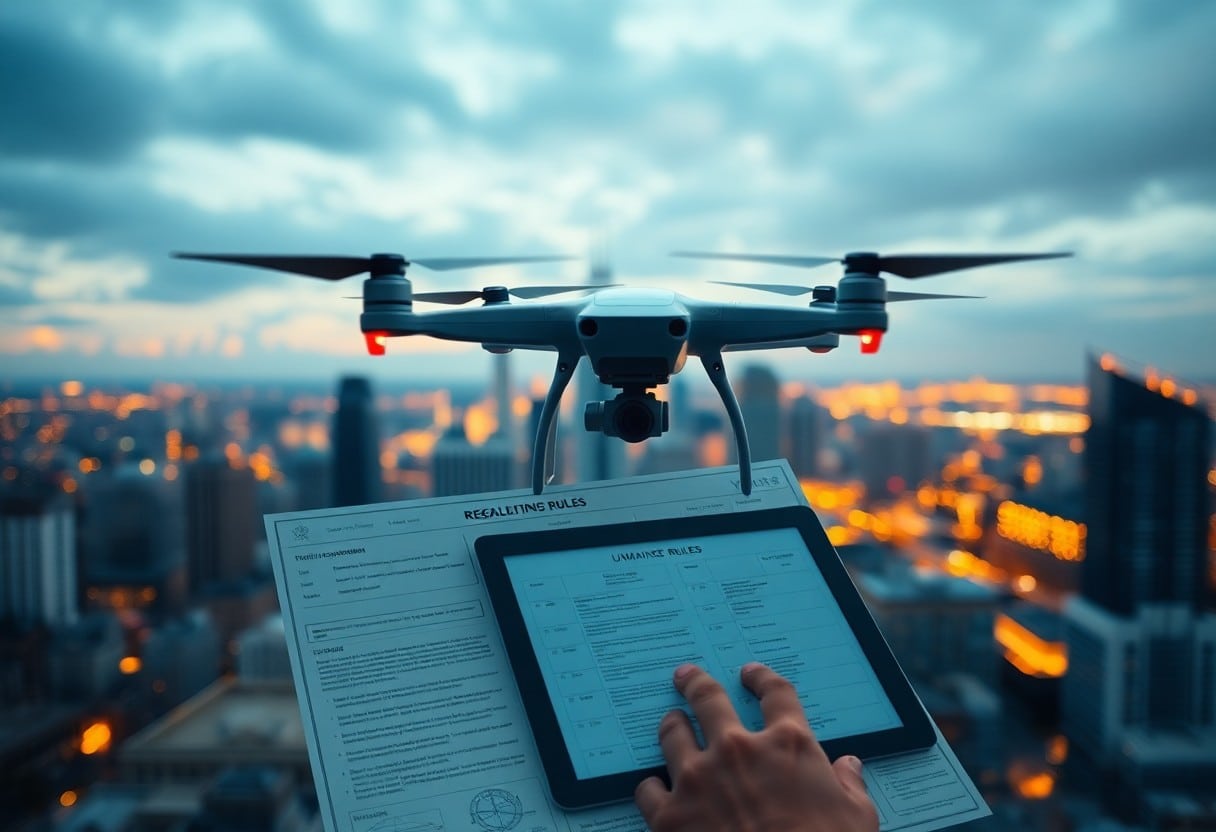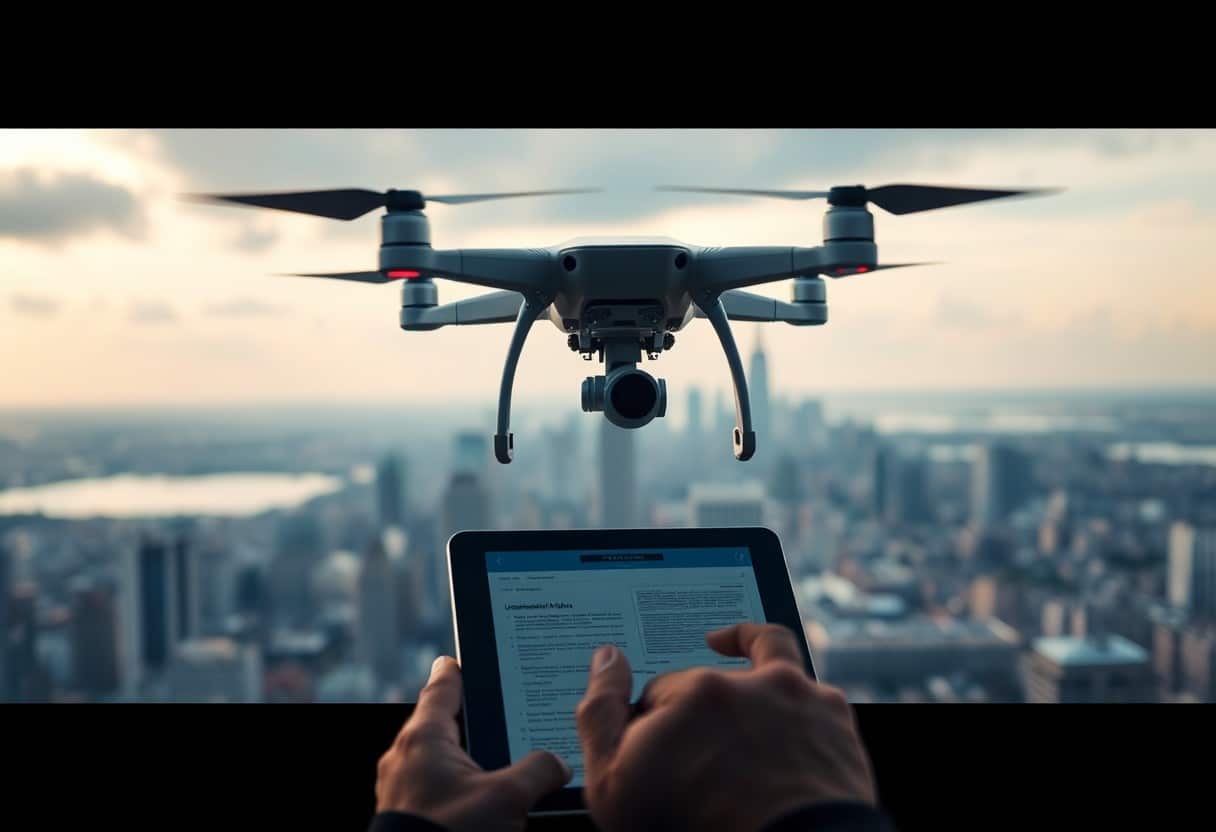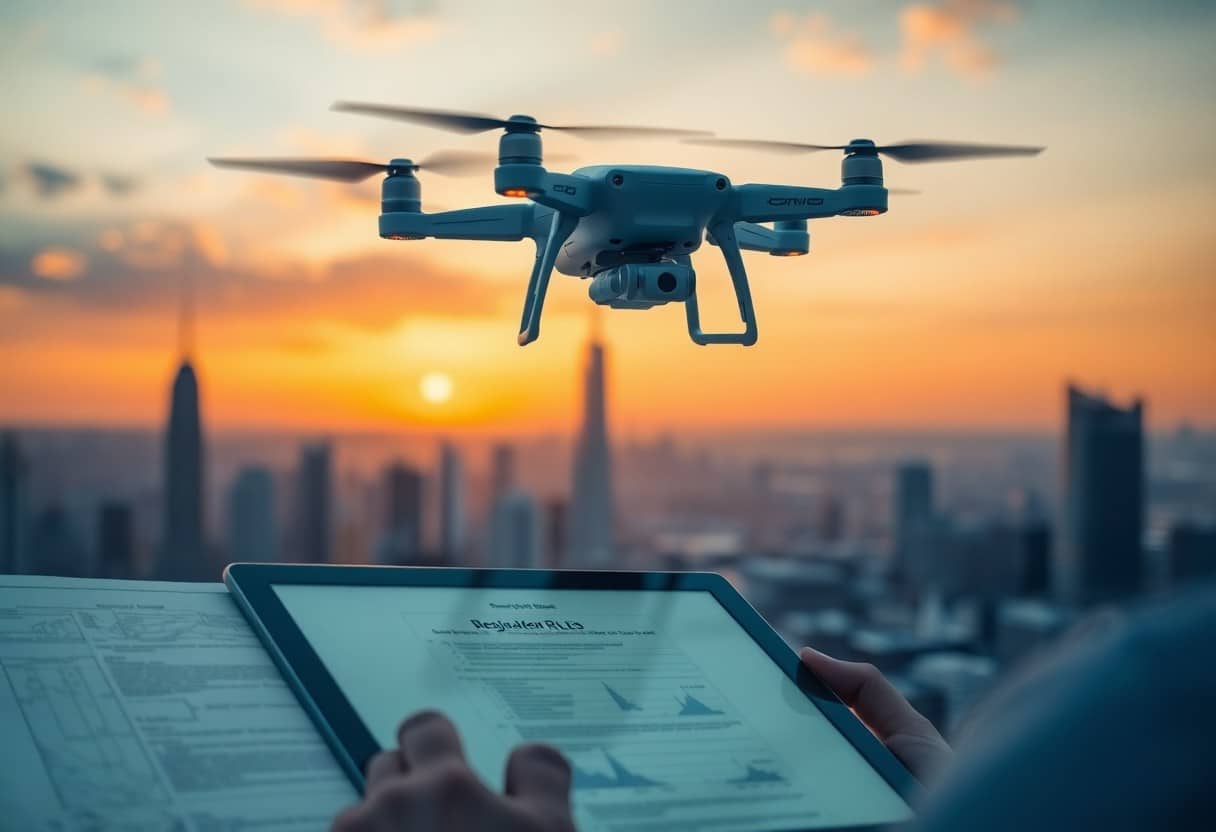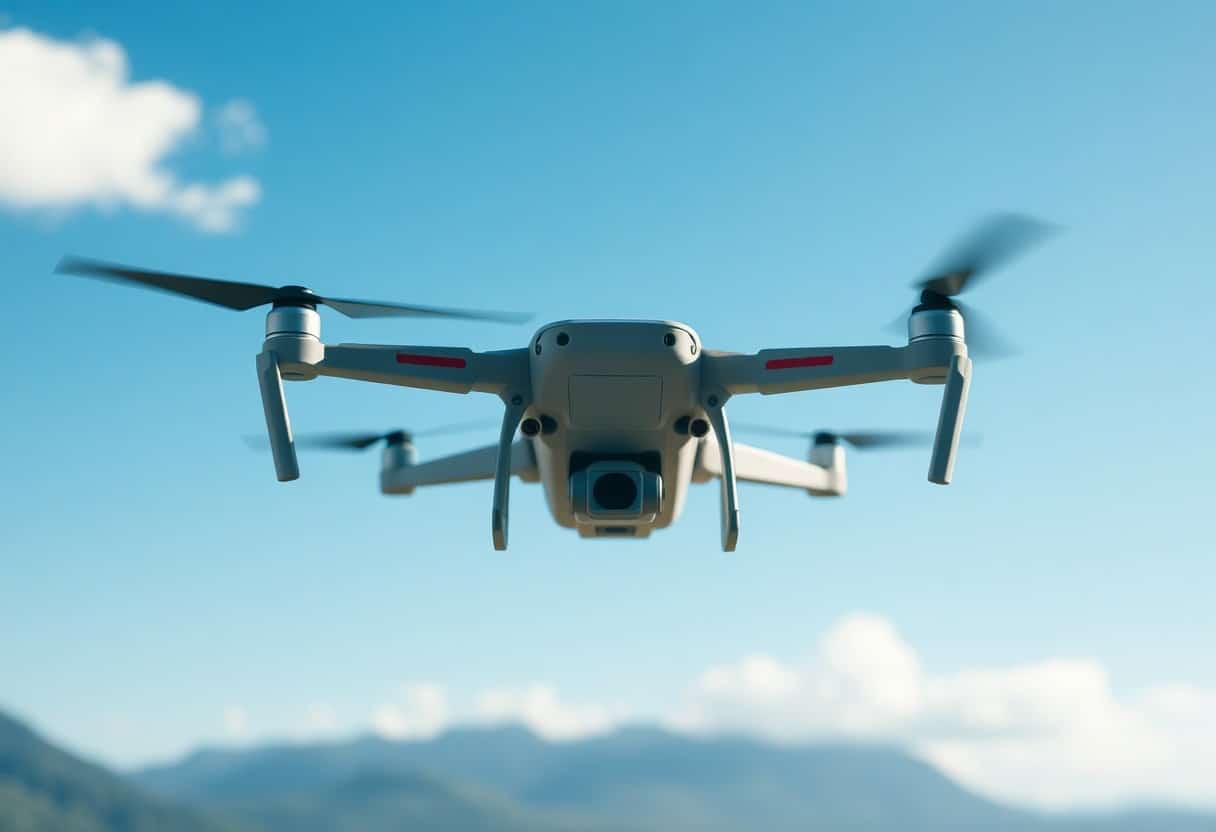10 Steps to Mastering the Rules for Commercial Use of Drones
In this article, you will learn how to master the rules of commercial use of drones, which in turn will enhance your expertise in the field. Mastering these rules will not only ensure that you are following the law, but will also keep you and others safe.Proper Use of Dronescan add tremendous value to your business activities, but there are alsoPotential RisksThat's why it's important to know the policy. By following these 10 steps, you'll be able to confidently utilize drones for commercial purposes and avoid unnecessary hassles.

Key Points:
- Understanding the law and regulationsFamiliar with drone laws and regulations to ensure legal operation.
- Obtaining the necessary licenses: Obtain the necessary flight permits and business licenses in accordance with local regulations.
- Conducting risk assessment: Conduct a thorough risk assessment before each flight to minimize potential hazards.
- Keep the flight record.: Record the data and events of each flight in detail for subsequent review and analysis.
- Compliance with flight limits: Follow airspace restrictions and altitude limits to avoid entering no-fly zones.
- Continuing Education and Training: Regularly attend training and seminars on drone operations to update knowledge and skills.
- safety first: Ensure that all operations follow safety procedures, prioritizing the safety of people and property.
Study of current legislation
Before flying a drone for commercial purposes, it is first necessary toUnderstanding Current RegulationsThese regulations change as technology advances and market demands change. These regulations change as technology advances and market demands change, so it's important to check in regularly to make sure you're following the latest standards. Whether it's a local law or a national guideline, it should form the basis of your compliance.
Local laws
In the area where your drone operation is located, you will need toKnowledge of and compliance with local laws. These laws may cover regulations on drone flight altitude, airspace restrictions, and flight times to ensure that you do not violate local regulations when conducting commercial activities.
National Guidelines
When operating a drone commercially, you must followNational GuidelinesThese guidelines are drawn up by the authorities. These guidelines have been developed by the competent authorities and cover safety standards for drone flights, commercial licenses, and operator qualification requirements. Compliance with these guidelines is not only a legal obligation, it protects you and others.suretyThe
National guidelines typically address drone registration requirements, weight and size limits, and technical specification requirements for the aircraft. You need to ensure thatFollow these standardsto avoid potential liability. Regularly updating your knowledge of these guidelines can help you get more out of your business operations whileEffective risk reductionThe
Obtaining the required licenses
Before starting commercial drone operations, you mustObtaining the required licenseWe have a number of licenses and permits that are required to ensure legal compliance and safety. Depending on the scope of your operations, these permits may include a drone pilot's license and other relevant documents that are essential to legally engage in drone business activities.
Remote Driver's Certificate
To legally operate a drone, you will need to obtain aRemote Driver's CertificateThis is a demanding examination. This is a demanding examination that assesses your understanding of flight safety, drone operating rules and relevant legislation to ensure you have the necessary knowledge and skills.
Evaluation Completion
You mustCompletion of necessary assessmentsThis may include both theoretical and practical flight tests. The assessment will cover all relevant knowledge of drone operation and the ability to make correct decisions in various situations.
Upon completion of the assessment, you will receive a certificate that not only symbolizes your professional competence, but also demonstrates your sense of responsibility for flight safety. During the process, make sure you keep track of all the details of the assessment, becauseFailure to pass the assessment may delay your business plan.If you do, you may even lose your chance to enter the market. Therefore, it is extremely important to prepare and learn.

Understanding Airspace Classes
Before flying a drone, it's important that you have an in-depth understanding of the various types of airspace because it's all about your safety and legality. U.S. airspace is divided into several different categories, each with different regulations and restrictions. By learning about these airspace categories, you can better control your flying environment and avoid potential legal risks. If you'd like to learn more about how to successfully obtain a commercial drone pilot license, please refer toWhat aerial composition tips make your drone photography stand out?The
controlled airspace
Controlled airspace is airspace regulated by air traffic controllers and usually includes the area around airports. When you operate a drone in controlled airspace, theSpecific rules and instructions must be followedFor example, contacting the tower and obtaining authorization. Such an operation isEnsuring Flight Safety and Avoiding ConflictsThe key.
uncontrolled airspace
Uncontrolled airspace is airspace that is not monitored or managed by air traffic controllers, usually away from busy airports. In these areas, you may enjoy more freedom, but you should also be aware of the aircraft around you. In uncontrolled airspace, you still have the responsibility to maintainSafe distanceand effective flight operations to avoid collisions.
In uncontrolled airspace, you need to maintain a high level of vigilance, especially for other drones or small aircraft flying at low altitudes. While uncontrolled airspace offers more operational flexibility, theRisks remainFor example, potential collisions with other aircraft. In addition, you need to be aware of weather and sight distance conditions, as these factors may affect your flight safety. Therefore, even in uncontrolled airspace, your flight decisions should be based on the following principlesSafety is a priorityto ensure successful business operations.

Pre-Flight Plan
Before conducting commercial drone flights, conduct thoroughPre-Flight PlanIt's important. This includes not only checking the status of your drone, but also taking a detailed look at the flight path, destination, and relevant laws to ensure that all regulations and safety requirements are met.
Flight Log
Keep a detailedFlight LogIt is vital to the operation of your drone. This not only helps you record the details of each flight, but also serves as a basis for operational performance evaluation and future improvements.
Weather conditions
realizeWeather conditionsThe impact on drone flights is critical. Adverse weather, such asStrong winds, heavy rain or fogIf you are flying, you should be aware that the weather may pose a threat to your flight safety. Therefore, it is important to check local weather forecasts and consider appropriate contingency plans before each flight to ensure your safety.
In particularStrong windThis can greatly affect the stability of the drone and increase the risk of accidents. You should also be aware thatVisibilityIn addition, flying a drone in low visibility conditions is relatively dangerous and prone to accidents. It is recommended that you use a professional weather service platform to regularly update your weather information and adjust your flight plan according to the specific conditions to ensure the safety and efficiency of your flight.
Risk Assessment
In operating a drone for commercial purposes.Risk AssessmentThis is a crucial step. Through systematic analysis, you can identify potential hazards and develop countermeasures to reduce the risk of accidents. To learn more about frequently asked questions and prepare teaching resources, seeStep by Step - The 6 Best Techniques for Drone 3D ModelingThe
Danger Recognition
The first step in conducting a risk assessment is toDanger Recognition. You need to identify all potential risks that could affect drone operations, taking into account environmental factors, operating area and equipment condition. This includes things like high voltage power lines, meteorological changes or other flying objects.
Lightening Strategies
Develop a risk management plan for the identified risks.Lightening Strategiesare key to ensuring the safety of drone operations. These strategies may include the development of detailed flight plans, the use of appropriate safety devices, and the training of operators to ensure that they are able to respond effectively to emergencies.
Further, these mitigation strategies should be adapted to the specific environment. For example, you can set different flight altitudes to avoid obstacles and ensure a safe distance from other aircraft. In addition, implementing regular equipment inspections and ongoing operator training can significantly reduce the risk of accidents. Understanding and practicing these strategies over and over again will help improve the safety of your drone operations.
Equipment Familiarity
Before entering into commercial drone operations, you must thoroughly understand your equipment. It's not just about learning how to fly, but also about familiarizing yourself with the features and limitations of your drone. Whether it's flight time, load capacity, or operating range for your commercial mission, it's important that you understand the capabilities of your drone.In-depth knowledge of your equipment's characteristicsAll necessary steps.
Drone Specifications
Each drone has specific technical specifications that affect its performance and suitability. You'll want to focus on metrics such as battery life, image resolution, maximum flight altitude, and payload capacity to make sure they meet your needs.
Software Tools
In addition to the hardware itself, the drone operation in theAppropriate Software ToolsThey are just as important. These tools help you plan your flight, monitor your flight status, process data, and perform post-processing. Understanding the function and operation of these tools has a direct impact on your productivity and final results.
The use of appropriate software tools such as flight planning software and geographic information systems (GIS) can help you toPrecise Route PlanningThese tools can help you reduce potential flight risks. In addition, these tools can help you achieve greater efficiencies in data analysis and increase your audience's satisfaction. In today's rapidly changing business environment, mastering these software tools will give you the power toCompetitive AdvantageThe
Safe Operating Practices
in commercial drone operations.Maintaining safe operation is crucialYou can minimize the risk of accidents. By being aware of your operating environment, ensuring your equipment is functioning properly, and following regulations, you can effectively reduce the risk of accidents. This not only ensures your own safety, but also protects the safety of others and maintains the good image of the drone industry.
Operating within line of sight
While flying, you must always keep the drone in yourWithin line of sightThis will allow you to better check for environmental changes and react in a timely manner to avoid potential hazards. This allows you to better examine changes in the environment and react in a timely manner to avoid potential hazards. Utilizing natural visual judgment, rather than relying on a screen, ensures the safe operation of your drone.
Emergency Response Procedures
In any case, it is important to understandEmergency Response ProceduresIt's important. You need to be prepared with a plan to deal with unexpected situations, such as equipment failure or an accidental collision. Developing and practicing these procedures in advance will help you stay calm and make the right decisions quickly in times of crisis.
For any commercial drone operation.Emergency Response Proceduresis indispensable. This includes, but is not limited to, regularly checking the performance of the drone, ensuring that all operators receive relevant training, and arranging the necessary insurance programs. When you are faced withUnexpected eventsBeing able to activate these procedures quickly will be important for your safety and the safety of others. ThereforeDevelop, memorize, and practice these plans.The key to ensuring safe operations on every flight experience is to be able to keep up with the challenges and uncertainties that come along with flying. You need to constantly improve your skills in this area in order to cope with uncertainties and challenges.
Maintenance Equipment
When it comes to commercial use of your drone, maintaining your equipment is a critical step in ensuring safety and performance. You must inspect and repair your drone regularly to keep it in top working condition and prevent accidents. Good maintenance not only extends the life of your equipment, but also avoids potential liabilities and damages.
Regular Inspection
It's important to check all parts of your equipment regularly to make sure everything is functioning properly. You should perform a thorough check of your drone before and after each flight, including the condition of the batteries, propellers and electronics. Only by ensuring that every part of the device is functioning properly can you ensure a safe flight.
Software Updates
Regular software updates are an integral part of drone maintenance. Each time the manufacturer releases a new firmware or application update, you should install it in a timely manner to ensure optimal drone performance and safety.
Failure to update software can lead to security vulnerabilitiesIn addition, newer versions of the software often offer ransomware features that increase flight stability and safety. Additionally, new versions of software often offer ransomware features that increase flight stability and safety. Therefore, you should prioritize these updates to avoid missing out on any important security fixes and enhancements and to ensure that your drone is always operating at its best.
Stay up to date
In the area of commercial use of drones.Stay up to dateis key to ensuring that you are up to date with the latest regulations. Keeping up to date with the latest developments and regulatory changes regarding drones can help you avoid potential legal problems. You can visit here for more information:What weather precautions should you keep in mind for effective aerial photography?The
Statutory Changes
Drone regulations are constantly evolving, so you should always stay alert to changes in the law. New regulations may affect your scope of operation, flight permits or safety requirements. By regularly checking for official releases or announcements from regulatory agencies, you can prepare in advance.
Industry News
Industry news is critical to your success with drones. Staying informed about new technologies, ideas and best practices in the industry will help your business advance and gain a competitive edge. You can stay up-to-date by following specialized websites, social media and relevant industry conferences.
With the rapid advancement of drone technology, industry news continues to push the boundaries of what's possible, involving new hardware, software features, or strategies for industry collaboration.Follow these messagesIt will help you stay on top of market trends and make sure you don't miss any new opportunities that could affect your business decisions. In addition, by attending industry events, you can expand your network, network with experts in your field and gain deeper insights.
Ten Steps to Mastering the Rules of Commercial Drone Use Conclusion
Mastering the rules of commercial drone use isn't easy, but with these ten steps, you can effectively advance your expertise and skills. From understanding the regulations to following flight safety guidelines, each step will help you gain a foothold in this fast-moving field. You'll be better able to manage risk, ensure compliance, and stand out in the marketplace. Always remember that continuous learning and adapting to new rules is the key to success.
Frequently Asked Questions
Q: What are the rules of operation for commercial drones?
A: The rules of operation for commercial UAVs include following the relevant guidance from civil aviation authorities, such as obtaining the necessary permits, complying with the restrictions on flight altitude and flight area, and observing other safety requirements to ensure flight safety.
Q: Why do I need to know the rules of drone operation?
A: Understanding the rules of drone operation is crucial to ensure flight safety, avoid legal liabilities, improve operational efficiency, and gain customers' trust. This contributes to the compliance and professionalism of drone commercial operations.
Q: How do I get a commercial drone license?
A: Obtaining a commercial drone permit usually requires passing a specific examination, submitting application information, and following the procedures of the local aviation authority. Specific requirements vary by region, so check local regulations for details.
Q: What are the flight range limitations of the drone?
A: Flight range restrictions for UAVs typically include prohibitions on flying in certain airspace (e.g., around airports), altitude restrictions, and the need for continuous visual contact. These restrictions are intended to prevent accidents and protect the safety of other aircraft.
Q: What are the insurance requirements for commercial drones?
A: Most countries require commercial drone operators to have appropriate insurance to cover possible third-party damage and liability. Insurance requirements vary depending on the nature of the drone's use and risk assessment.
Q: How to ensure the safety of drone operation?
A: Ways to ensure the safety of drone operations include conducting detailed pre-flight inspections, continuously monitoring weather conditions, following flight plans, and using redundancy systems when needed to minimize the risk of possible accidents.
Q: What are the data privacy requirements for commercial drones?
A: Data privacy requirements for commercial drones require operators to comply with relevant laws and obtain the necessary consent to ingest and process any personal data. In addition, data must be stored and protected in accordance with local privacy regulations.




